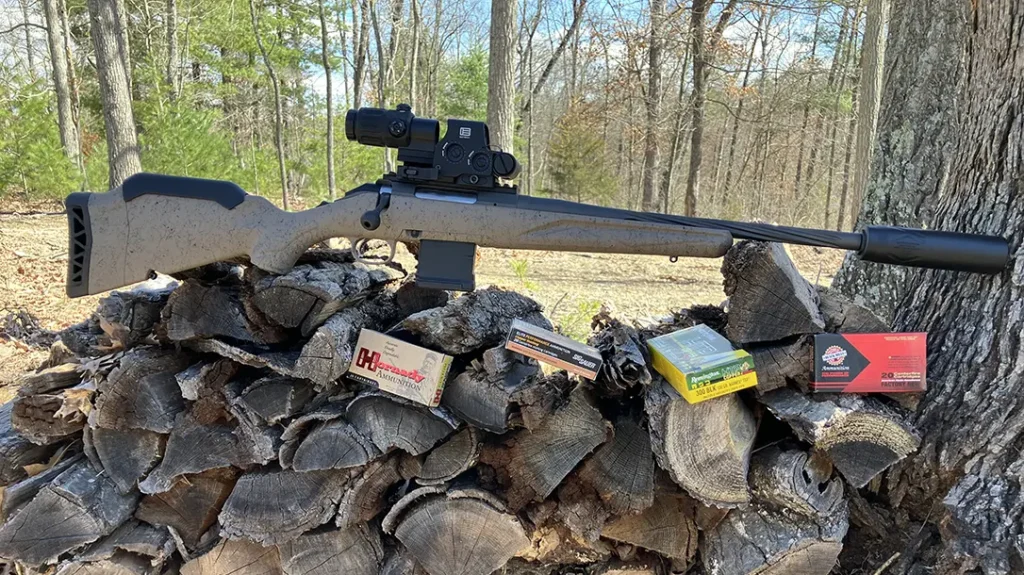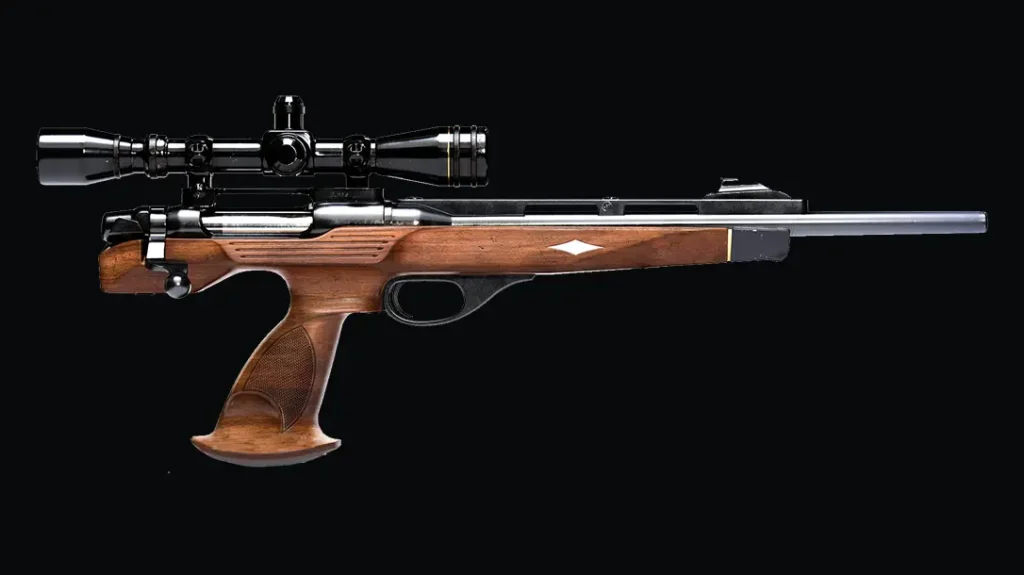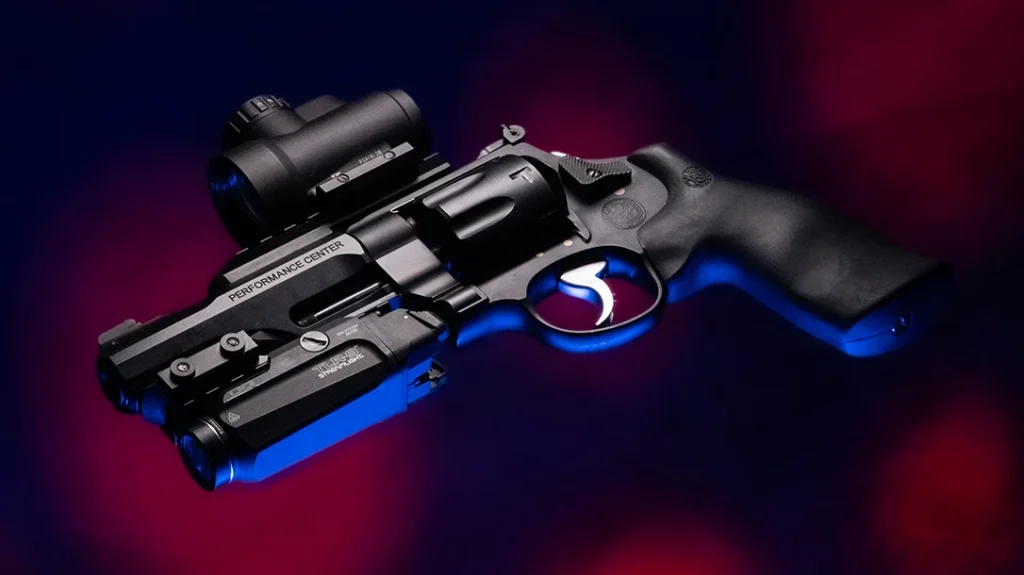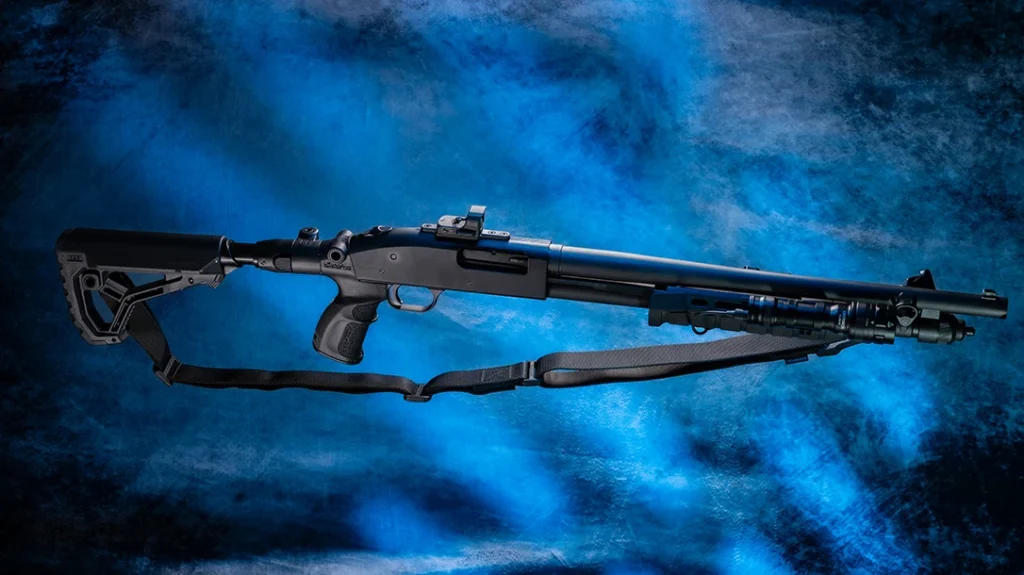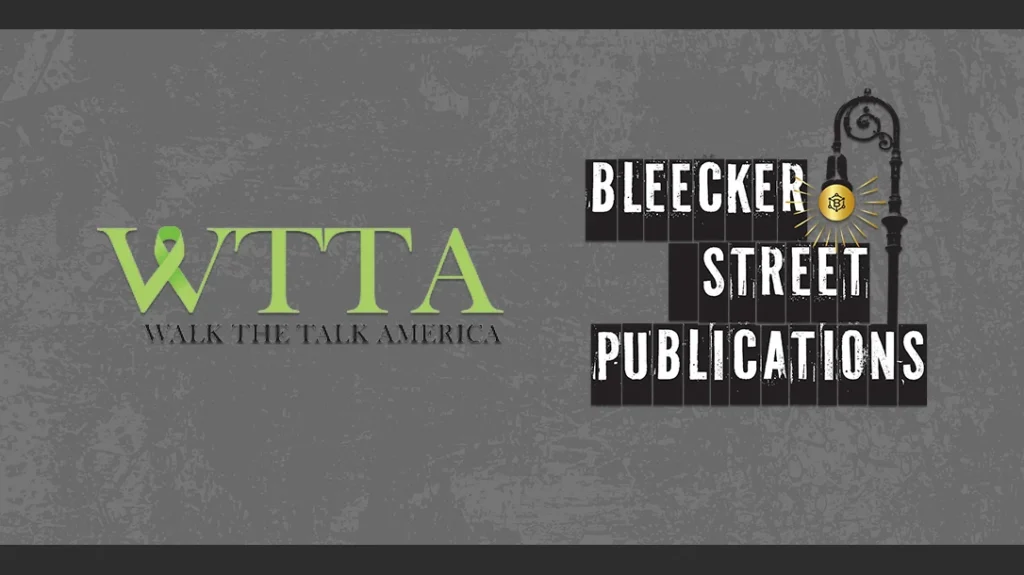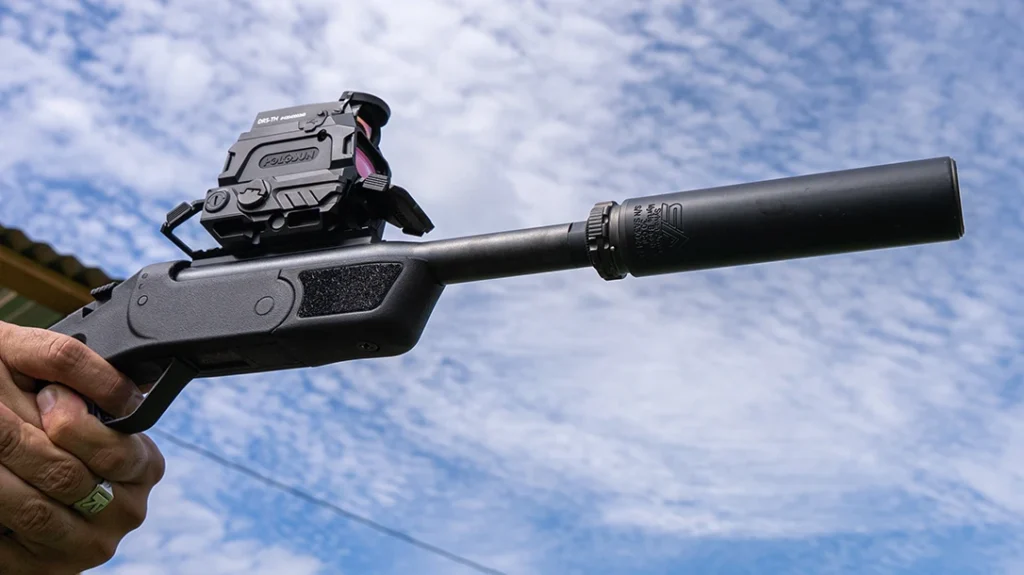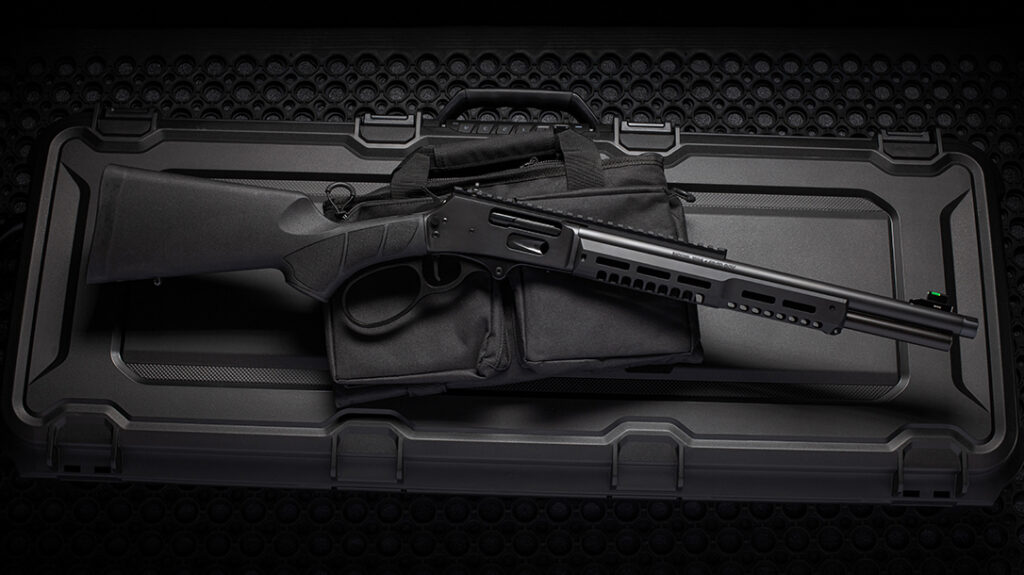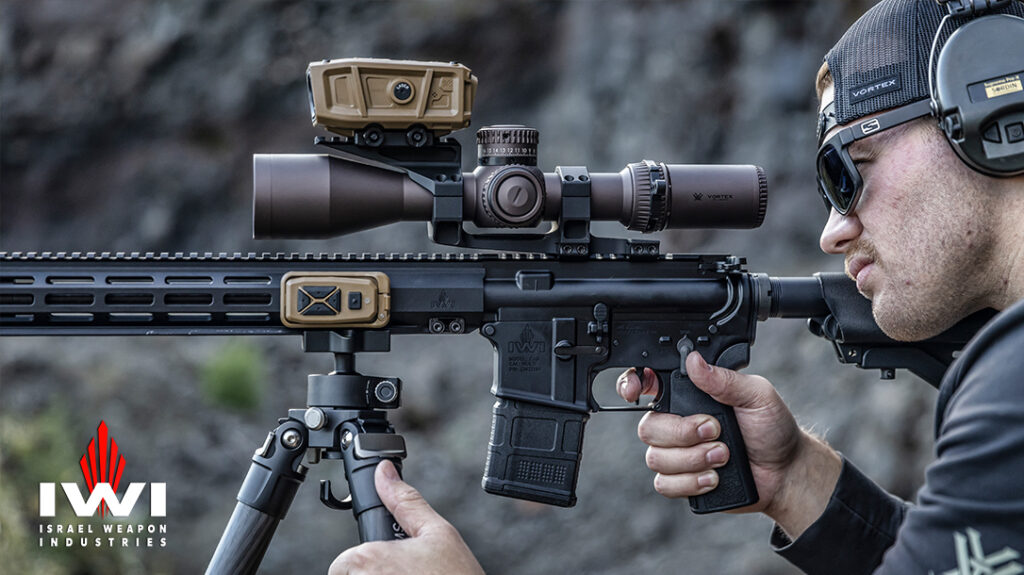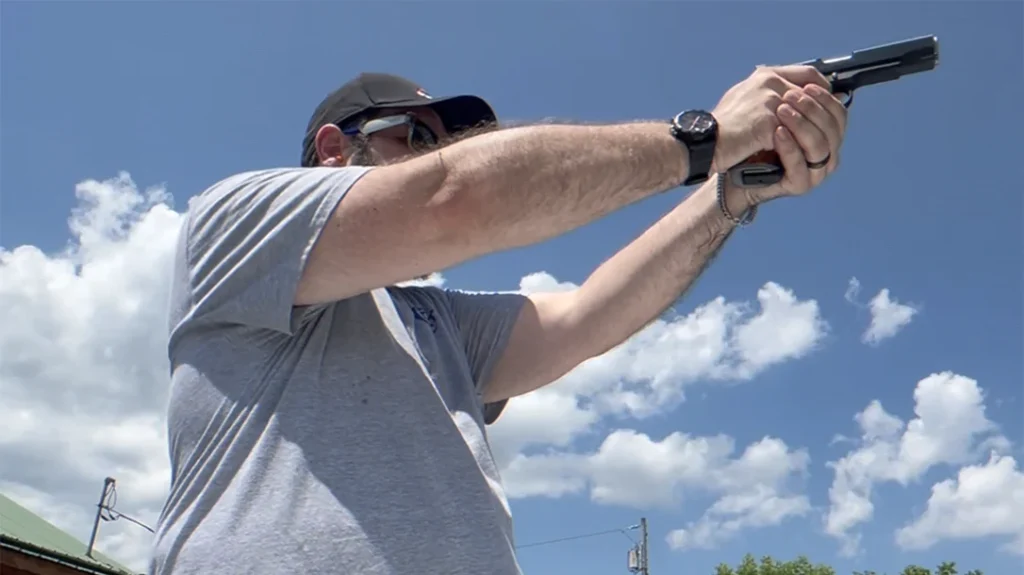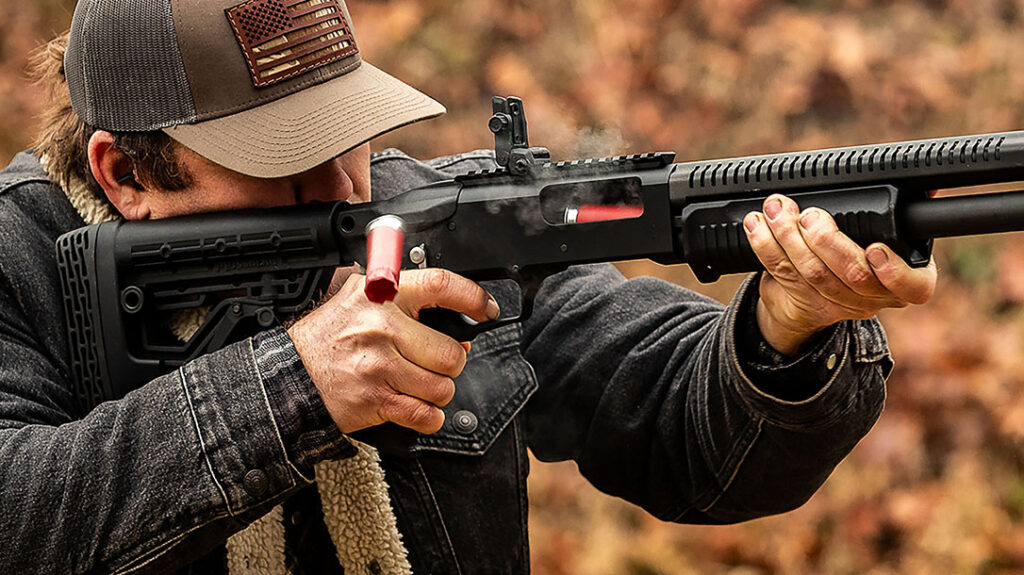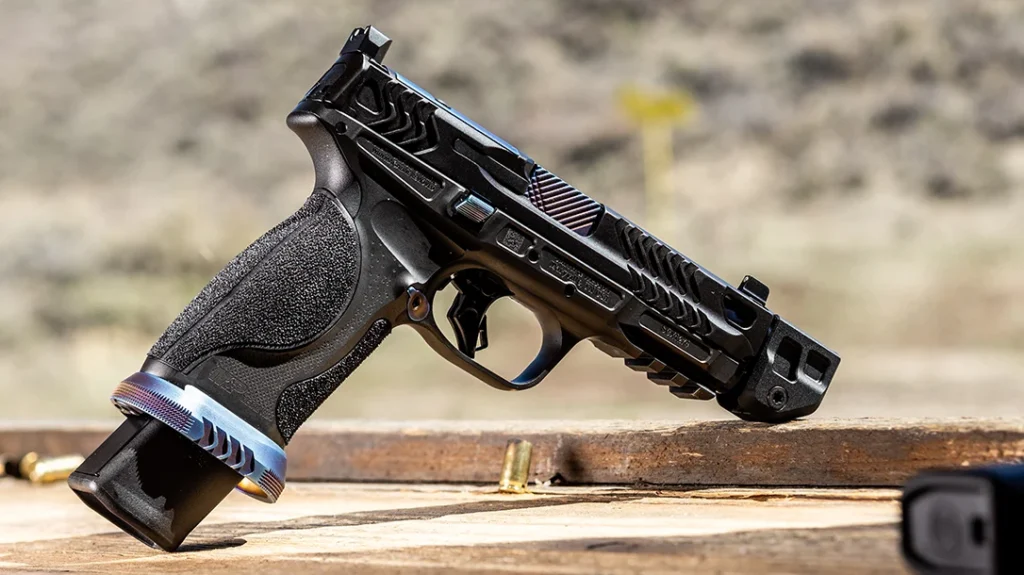More than any other seller of Old West reproduction firearms, Cimarron goes the farthest to capture the spirit of the original guns. I love the way they minimize the anachronistic impact of the legally required markings by putting them in the location, format, and font styles used on the original guns. Other importers could have insisted on this, but they didn’t. Cimarron did, and it’s one of the things that puts their guns on a higher level than the rest. Another is their unashamed passion for recreating the guns of classic Western TV shows and movies. Their latest is the Cimarrons John Russell Rifle – Winchester 1873.

A True to Form Classic – Cimarrons John Russell Rifle
This rifle was the main weapon of Paul Newman’s character in the 1967 film Hombre. Newman plays a white man raised from childhood as an Apache who leaves the reservation to collect an inheritance and must travel by stagecoach in the company of white settlers he finds unappealing. Most of them don’t think much of him either. This is a very good film, well-cast, with memorable performances, most notably from Newman, Diane Cilento, and Richard Boone. Boone’s was the most striking, in my opinion. Other than mentioning Newman’s rifle fits his character and was showcased in the advertising posters, I’ll say no more about the movie in case you haven’t seen it.
Advertisement — Continue Reading Below
The John Russell was specially made for Cimarron by Uberti, featuring a 20-inch round barrel and a six-round button magazine, along with a rifle forend and buttstock with a crescent butt-plate and a blued finish reminiscent of a working gun. It’s offered in modern .357 Magnum or .45 Colt chamberings only. Standard production Winchesters of the time had full-length magazine tubes. The short, button, or half-magazine had to be specially ordered from the factory by the customer and cost the same as the standard rifle.

Dual Use Rifle
The line between hunting rifles and fighting rifles wasn’t so clearly delineated in the 1800s as it is today. Winchester’s advertising showcased their lever-action repeaters in use, putting game on the table; more noteworthy to the newspapers of the time, however, was their frequent use to defend against, or perpetrate, violence. The Old West was a comparatively dangerous place, so it’s no surprise that full-length magazine guns were vastly more popular than short-button magazines. In a gunfight, life or death might hang on a few extra cartridges in the magazine.
Advertisement — Continue Reading Below
Button magazine guns sacrificed ammunition capacity for lighter weight, better balance, and faster handling. They could be matched with half-octagon/half-round barrels, another special order feature, or with a full-round barrel to further reduce weight. If this is starting to sound like the makings of a better hunting rifle, you aren’t the only one to see it. Teddy Roosevelt favored the button magazine on his Winchesters. Hunters who weren’t worried about fighting off hostile Indians or desperados could appreciate the advantages of a button magazine without much worry over its 50 percent reduction in ready firepower.

Button Vs. Tube
I’ve never seen any documentation that half-magazine lever action rifles were more accurate than their full-magazine brothers, but a rifle barrel’s harmonics generally improve when it isn’t bound up or pulled on. Removing the shifting weight of a full-length magazine tube and a clamp attaching it to the barrel can only improve accuracy. However, in the late 19th century, the theoretical accuracy advantages of the button magazine might easily be nullified by many other dimensional deviations from the specifications in parts and ammunition due to limitations of the manufacturing processes of the day. The Cimarron John Russell was made by Uberti this year with modern CNC equipment, and I’d love to test its accuracy against their 20-inch round barrel, full-length magazine model at 100 or 150 yards.
Advertisement — Continue Reading Below
I was impressed with the John Russell’s quality as well as its accuracy. Metal and wood fit and finishing were excellent. The only two Italian proof marks I could spot were on the bottom of the receiver just behind the lifter, and “A. UBERTI ITALY” was hidden under the lever. The font and decoration used in the “Model 1873” tang marking were so convincing that I had to check it against an original rifle. It was very close. The hammer spur checkering is cut rather than burned in with a laser.
The lever was initially a bit stiff but loosened up nicely after working it with a little oil. The 9.5 to 10-pound trigger-pull weight was my only initial concern. It was a true single stage, with no take up at all, and broke crisply. Had the trigger been a few pounds lighter, the gun would have been even more accurate.

Advertisement — Continue Reading Below
Cimarrons John Russell Rifle – Adjustable Sights
The sights are adjustable. The front can be drifted in its dovetail for windage, as can the rear, the latter having a traditional stepped elevator. The rear sight was a historically correct buckhorn style, which I passionately hate for bullseye shooting because of the challenge of keeping a consistent elevation hold when the top of the front sight must sit at the bottom of a semi-circle.
I tested for accuracy from the bench with a Caldwell “The Rock” rest under the handguard and a sandbag under the butt. I set my 6-inch bullseye target at 50 yards and fired several five-shot strings with three different types of full-power .357 Magnum. Despite a heavy trigger and buckhorn sight, my groups were excellent. Part of that may be due to the rigidity of the heavy barrel. It reminded me of a target rifle, and the weight unloaded was a hefty 7 pounds 13.2 ounces. The barrel wall is a lot thicker on a .357 than a .45, making the former several ounces heavier than the latter.
The most accurate load was the standard magnum158 grain JHP load by Black Hills ammunition, averaging groups of 1.82 inches and 1,774 feet-per-second (FPS). This would be a great hunting and target load. The brass cases expanded enough to cause a slight drag against the chamber walls during extraction.
Advertisement — Continue Reading Below

Performance .357 Ammo
Close behind in accuracy was Winchester’s Super X 125 grain JHP, a very popular load for law enforcement in the .357 Magnum’s heyday. It averaged 2.31-inch groups and a screaming 2,195 FPS. This zippy load shot to the point of aim, and its nickel-plated cases, unlike the plain brass case cartridges, ejected without the slightest drag. This would be my choice for personal defense.

Advertisement — Continue Reading Below
Cimarrons John Russell Rifle Performance
Federal American Eagle 158 grain JSP shot average groups of 3 inches at 1,818 FPS. Both 158 grain loads seem to shoot about 1.4 inches below the point of aim, with the sight elevator in its lowest position. The Federal load had the most notable drag during ejection, but this cannot be fairly considered a fault with the gun or the ammunition.
It should be remembered that these guns were originally designed for tapered wall cartridges. Some drag is to be expected when you substitute straight wall cases. While I didn’t shoot any standard velocity .38 Special loads in the test rifle, I suspect they would operate more smoothly because their lower pressures cause less case expansion.

Advertisement — Continue Reading Below
In my opinion, the power gained from the .357 Magnum more than makes up for the loss of a little smoothness in cycling. Overall, the John Russell shot was as good as it looked. In fact, it was one of the most accurate .357 Magnum lever actions I’ve tested.
For more information, visit:https://www.cimarron-firearms.com/1873-john-russell-20-in-357.html
Performance and Specs
Cimarron 1873 JOHN RUSSELL 20” .357 Magnum Range Performance
Advertisement — Continue Reading Below
| Brand | Bullet Weight & Type | Velocity | Best Group |
| Federal American Eagle .357 MAG | 158 JSP | 1.818 | 2.95 |
| Black Hills Ammunition .357 MAG | 158 JSP | 1,774 | 1.49 |
| Winchester Super X .357 MAG | 125 JHP | 2,195 | 1.60 |
Performance was tested with a series of five-shot groups fired at 50 yards from a bench rest with a Competition Electronics Pro-Chrono Digital Chronograph set 15 feet from the muzzle. Bullet weight is in grains, velocity in feet-per-second and the group size in inches.
Specifications: Cimarron 1873 JOHN RUSSELL 20” .357
| Caliber: | .357 Magnum/.38 Special |
| Capacity: | 6 round tubular magazine |
| Action: | lever action |
| Trigger: | 9.5-10 pound pull single stage trigger |
| Material: | steel |
| Finish: | blue |
| Stock: | walnut |
| Barrel Length: | 20-inch, round |
| Overall Length: | 39 inches |
| Weight: | 7 lbs. 13.2 oz. empty |
| Safety: | half-cock notch |
| Sights: | elevation/windage adjustable rear, windage adjustable front with brass beaD |
| MSRP: | $1,780 |

